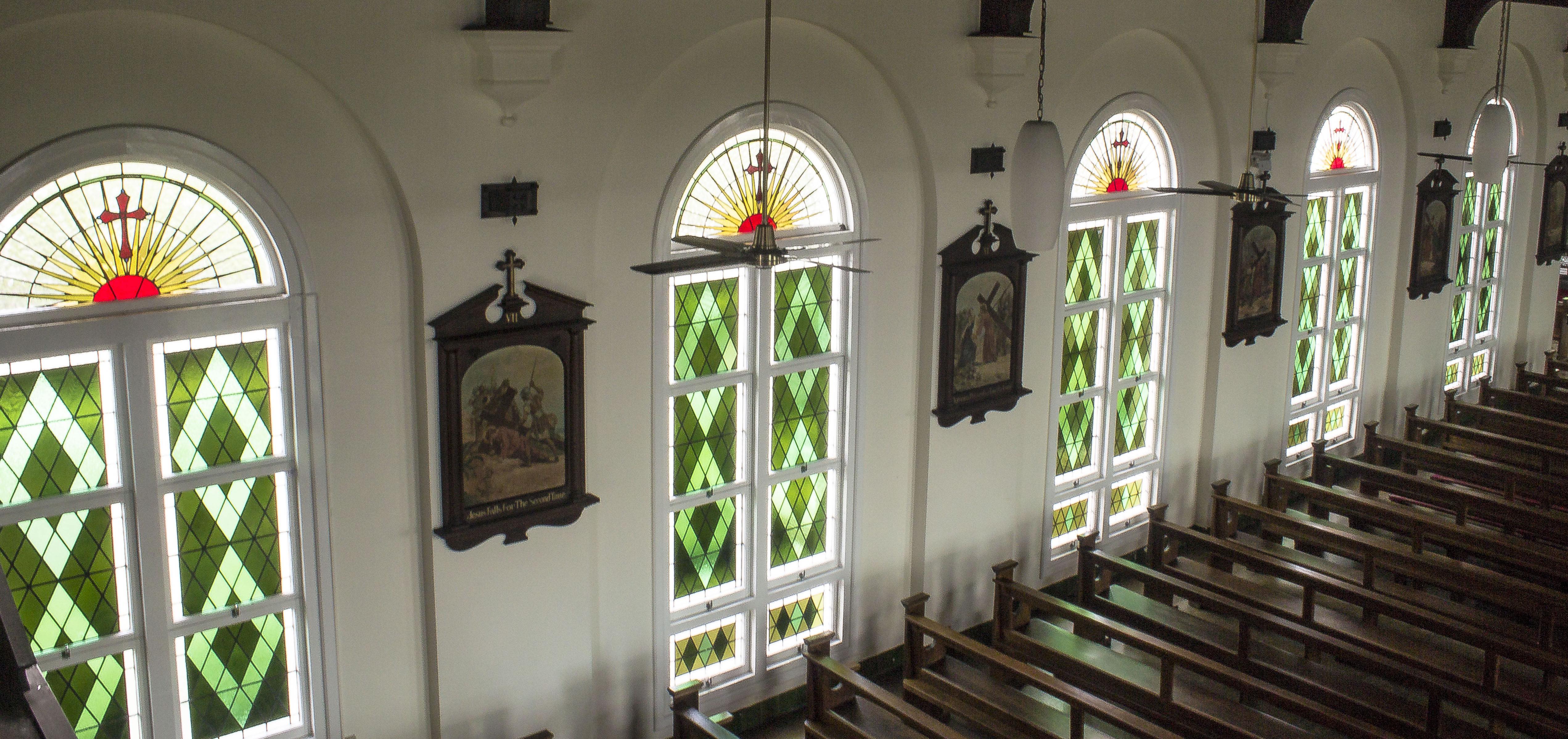Thanks to the generous support from the Storylines Art Bursary by Mark Furner MP for Ferny Grove and the James Whitney Workshop/Seminar Scholarship by the Stained Glass School/Stained Glass Association of America, I recently had the opportunity to spend few weeks in the US to further my expertise in glass conservation, in particular for heritage stained glass.
During this trip I spent some time at the Corning Museum of Glass (NY), visiting and working with Stephen Koob, Fellow of the International Institute of Conservation and the American Institute for Conservation, who is responsible for the care and preservation of all of the Museum’s collections.

Under Stephen’ mentorship, I have practiced conserving some damaged glass objects, including a vessel created by Frederick Carder in his carrear at Corning. I also had a chance to visit the museum and assist to the end of residency demonstration by visiting artist Dane Jack (blown glass).

After my time in Corning, I travelled for few days to Boston, MA, visiting some churches with heritage stained glass on the way. In Boston, I had the privilege to see a number of stained glass panels by Tiffany and La Farge, among others, including some installed in Harvard University’s Memorial Hall, generally not open to the public.

Once left Boston, I travelled to New York where I visited the Bullseye Glass Resource Center New York, the Queens and Brooklyn Museums, and the Claire Oliver Gallery (a commercial gallery that is the sole representative of Judith Schaechter’s stained glass work).

After New York, I travelled to Bryn Athyn, PA; not before having stopped in Princeton, NJ to admire some great stained glass from Tiffany Studios, depecting St George, and in Millville, visiting WheatonArts – the Museum of American Glass.

Once in Bryn Athyn, I had the opportunity to participate in a heritage stained glass conservation workshop, lead by Steve Hartley, with the help of Kenneth Leap. In the workshop, we had the opportunity to work on and examine a number of medieval and heritage stained glass panels. I also had the chance to return to Philadelphia to admire Tiffany’s Dream Garden mosaic and some stained glass in a church and in the local museum.

Next, I continued my trip and I drove to Washington, where I returned to visit the Washington National Cathedral, including the Stained Glass Association of America’s annual exhibition. Details of glass panel by Kathy Barnard below.

Finally, I concluded my journey in Los Angeles. There I visited the St. Timothy’s Catholic Church, which has several Harry Clark’s windows, and the Forest Lawn – Glendale – Great Mausoleum. There, I had the chance to see ‘The last supper’, the famous painting of Leonardo da Vinci, but in the form of a stained glass window. The museum also had on exposition a few wonderful panels by Franz Mayer & Co. of Munich — but the greatest collection of Mayer’s windows in Los Angeles was in the Cathedral of Our Lady of the Angels. A true art supper for the stained glass lovers.

I will post on this blog some stories and images from my trip, including images of Tiffany’s stained glass and lamps, La Farge stained glass masterpieces, fantastic glass artworks from the Corning Museum of Glass, and much more. So, keep looking!







































